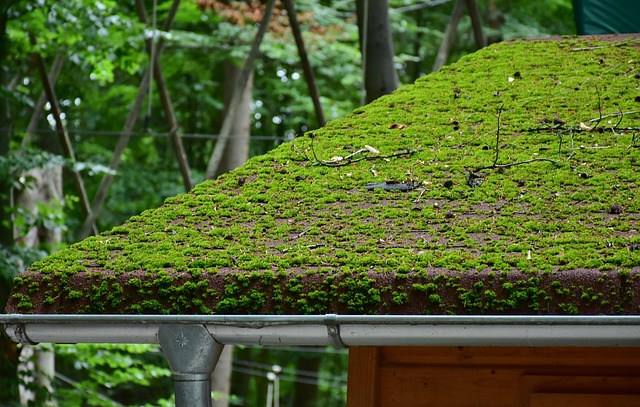Extreme weather events pose significant risks to structures, particularly roofing systems, causing severe damage if not properly prepared. Different regions face unique challenges like high winds, wildfires, intense heat, heavy rainfall, or snow loads. Choosing durable tile roofing materials is crucial for enhancing building resilience and structural integrity. These materials offer superior fire resistance, protect against strong gusts, and mimic traditional styles while providing enhanced durability. Investing in these high-quality tiles extends roof lifespan, reduces maintenance needs, and ensures continuous shelter against harsh weather conditions. Regular maintenance, including inspecting for loose tiles and cleaning gutters, is essential to prevent costly repairs or replacements.
In an era where natural disasters are becoming increasingly frequent, the demand for durable tile roofing materials that can withstand fire, wind, and extreme weather conditions has never been higher. This comprehensive guide explores the critical factors for selecting resilient roofing solutions. We delve into the challenges posed by these harsh elements, emphasizing the significance of fire resistance, understanding wind load dynamics, and effective waterproofing. Additionally, we examine natural and synthetic options, offering insights on longevity and maintenance to ensure your roof remains a fortress against the elements.
Understanding the Challenges of Extreme Weather Conditions
Extreme weather conditions pose significant challenges for any structure, testing their durability and safety. From powerful winds to intense fires and relentless rainfall, these events can cause severe damage if buildings aren’t adequately prepared. In particular, roofing systems are highly vulnerable, as they take the brunt of these forces. Therefore, choosing the right durable tile roofing materials is paramount to ensure a home or building stands strong against such adversities.
The impact of extreme weather varies across regions, with each presenting unique risks. For instance, areas prone to hurricanes experience high-speed winds that can rip off roofs entirely. Meanwhile, regions with frequent wildfires demand fire-resistant tiles that can withstand intense heat and sparks. Additionally, heavy rainfall and snow can weigh down roofs, requiring materials capable of bearing extra load. Understanding these challenges allows homeowners and builders to select durable tile roofing options tailored to their specific climate, thereby enhancing the structure’s resilience against extreme weather conditions.
The Importance of Fire Resistance in Roofing Materials
In the quest for robust and safe structures, fire resistance stands as a cornerstone in building construction. Among the various components, roofing materials play a pivotal role due to their exposure to extreme conditions. Durable tile roofing materials that are resistant to fire offer more than aesthetic appeal; they provide critical protection against one of nature’s most destructive forces.
Fire-resistant tiles not only safeguard buildings but also contribute to the overall structural integrity by withstanding intense heat and flames, delaying the spread of fire, and ensuring the safety of occupants. When choosing roofing solutions, prioritizing durable tile options that meet stringent fire resistance standards is essential for creating a safe haven in the face of potential hazards, making them an indispensable element in any construction project.
Wind Load and Durability: Key Considerations for Tile Roofs
Tile roofs have long been a popular choice for their aesthetic appeal and longevity, but when faced with extreme weather conditions, such as high winds, durability becomes a paramount concern. Understanding wind load is crucial in ensuring the safety and integrity of a roof system. The ability of tile roofing materials to withstand strong gusts and maintain structural integrity is a key factor in their overall performance during severe storms.
Durable tile roofing materials are designed with specific considerations for wind resistance. These include reinforced backing, higher-gauge underlayments, and advanced fastening systems that secure the tiles firmly to the deck. By adhering to manufacturer guidelines and local building codes, homeowners can protect their investments and ensure their roofs provide reliable shelter during even the most stringent weather events.
Exploring Natural and Synthetic Options for Waterproofing
In the quest for durable tile roofing materials that withstand fire, wind, and extreme weather conditions, understanding the options available is key. One approach lies in exploring natural materials renowned for their inherent water-resistant properties, such as terracotta and slate. These products have long been favored for their aesthetic appeal and ability to resist harsh elements to a certain extent. However, advancements in synthetic manufacturing have led to the development of innovative tile alternatives that offer superior waterproofing without compromising on durability or visual charm.
Synthetic options like fiber-cement roofs merge natural fibers with cement and resins, resulting in tiles that are not only water-resistant but also fire-retardant and strong against high winds. These materials mimic the look of traditional roofing while providing enhanced protection against the elements, making them a compelling choice for those seeking both style and substance in their durable tile roofing materials.
Longevity and Maintenance: Ensuring Resilience Against Elements
Investing in durable tile roofing materials is a strategic move towards ensuring your home’s longevity and protection against harsh weather conditions. These high-quality tiles are meticulously designed to withstand extreme elements, from intense winds to relentless fires and pouring rain. Their robust construction translates into reduced maintenance needs, allowing homeowners to focus on enjoying their living spaces rather than constant repairs.
Regular maintenance plays a pivotal role in keeping your roofing system resilient. Simple measures like inspecting for loose tiles, cleaning gutters, and reapplying sealants can significantly extend the lifespan of your durable tile roof. By addressing potential issues early, you prevent minor problems from escalating into costly repairs or replacements, ensuring your home remains sheltered and well-protected against the elements.
In conclusion, navigating extreme weather conditions requires robust solutions, especially in roofing. By understanding the challenges outlined in this article—from fire resistance to wind load and waterproofing—property owners can make informed choices. Investing in high-quality, durable tile roofing materials that offer excellent fire protection, withstand strong winds, and provide effective waterproofing is paramount for ensuring longevity and resilience against these elements. This comprehensive approach to roofing not only safeguards structures but also contributes to safer, more sustainable communities.
